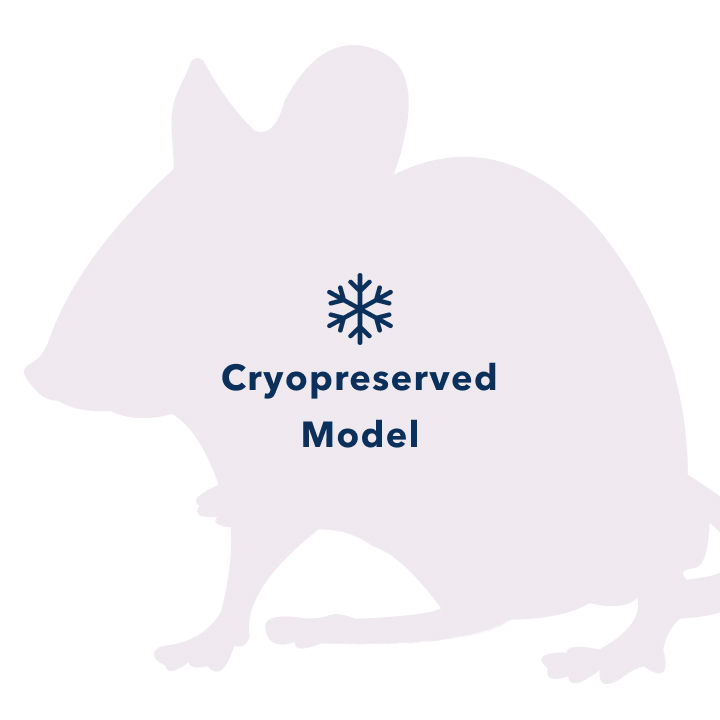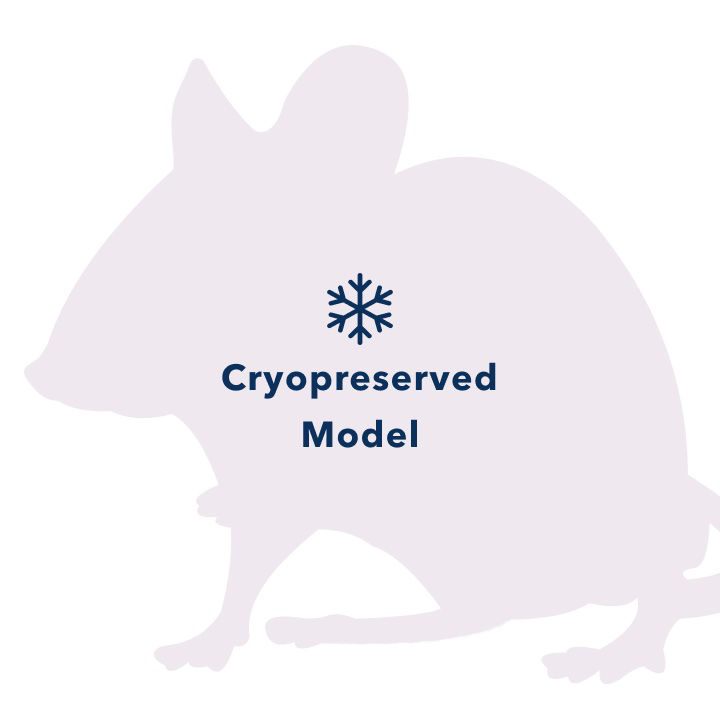| Model No. | Nomenclature | Genotype |
|---|---|---|
| 8223 | C57BL/6-Nr1i2tm1(NR1I2)Arte Nr1i3tm1(NR1I3)Arte | Inquire for genotype |
Humanized PXR-CAR Mouse

- Description
- Related Products & Services
- Price & Licensing
- Overview
- Genetics
- Guides & Publications
- Applications & Therapeutic Areas
- Transit, Housing & Welfare
- Diet
Overview
Nomenclature: C57BL/6-Nr1i2tm1(NR1I2)Arte Nr1i3tm1(NR1I3)Arte
- This targeted mutation strain carries a replacement of the mouse Nr1i2 and Nr1i3 genes which encode for the nuclear receptors PXR and CAR with the corresponding human orthologous genes.
- Useful in prediction of CYP induction and therefore pharmacokinetics, drug toxicity, and efficacy in man.
- Model has relevance for the prediction of the hazard of non-genotoxic rodent liver growth carcinogens to humans.
Origin
This model is cryopreserved and available for recovery. Models can typically be recovered and delivered to customers within 12 weeks after order receipt. Purchase of this model includes perpetual use rights and a deliverable of four mutant animals at the Murine Pathogen Free™ health standard along with a genotyping protocol. For models which include a recombinase gene or multiple alleles, all alleles will be provided, but individual animals may not contain all mutant alleles.
Taconic’s Colony Management experts can design a plan to grow your colony faster.
Genetics
Guides & Publications
Initial Publication:
- Scheer N, Ross J, Rode A, Zevnik B, Niehaves S, Faust N, Wolf CR. (2008) A novel panel of mouse models to evaluate the role of human pregnane X receptor and constitutive androstane receptor in drug response. J. Clin. Invest. 118(9): 3228-3239.
Additional Publications:
- Scheer N, Ross J, Kapelyukh Y, Rode A, Wolf CR. (2010). In vivo responses of the human and murine pregnane X receptor to dexamethasone in mice. Drug Metab Disp 38(7) 1046-1053.
- Ross J, Plummer SM, Rode A, Scheer N, Bower CC, Vogel O, Henderson CJ, Wolf CR, Elcombe CR. (2010). Human constitutive androstane receptor (CAR) and pregnane X receptor (PXR) support the hypertrophic but not the hyperplastic response to the murine non-genotoxic hepatocarcinogens phenobarbital and chlordane in vivo. Toxicol Sci 116(2):452-66.
- Braeuning A, Gavrilov A, Brown S, Wolf CR, Henderson CJ, Schwarz M. Phenobarbital-Mediated Tumor Promotion in Transgenic Mice with Humanized CAR and PXR. Toxicol Sci. 2014 May 25.
Applications & Therapeutic Areas
- ADMET
Transit, Housing & Welfare
Need more info? Click the live chat button or Contact Us
Diet
- Services
- Licensing
- Pricing - USD
- Pricing - EUR
- Pricing - DKK
- Select my Health Standard
- Get Custom Pricing Guide
Humanized PXR-CAR Mouse
This model is sold under terms which grant perpetual use rights.
Pricing - USD
8223-EZcohort-4
| Item | Commercial | Nonprofit |
|---|---|---|
| Cryopreserved Model | US$21,000.00 | US$13,000.00 |
Cryopreserved models are invoiced upon shipment of recovered animals. Once orders are placed, the full purchase price will be applied if the order is canceled. For orders greater than 4 animals, please contact Taconic for options.
Fees for Taconic Transit Cages™ and freight are in addition to the price above.
Pricing - EUR
8223-EZcohort-4
| Item | Commercial | Nonprofit |
|---|---|---|
| Cryopreserved Model | 21.000,00 € | 13.000,00 € |
Cryopreserved models are invoiced upon shipment of recovered animals. Once orders are placed, the full purchase price will be applied if the order is canceled. For orders greater than 4 animals, please contact Taconic for options.
Fees for Taconic Transit Cages™ and freight are in addition to the price above.
Pricing - DKK
8223-EZcohort-4
| Item | Commercial | Nonprofit |
|---|---|---|
| Cryopreserved Model | kr.156.699,00 | kr.97.004,00 |
Cryopreserved models are invoiced upon shipment of recovered animals. Once orders are placed, the full purchase price will be applied if the order is canceled. For orders greater than 4 animals, please contact Taconic for options.
Fees for Taconic Transit Cages™ and freight are in addition to the price above.
Select my Health Standard
Need help choosing the right Taconic Biosciences health standard for your research?
Use the Health Standard Selector to enter your exclusion list. The tool will tell you which health standards meet your requirements.
Get custom pricing guide
Schedule A Scientific Consultation
Connect directly with a member of our Scientific Solutions team who can help you select the most appropriate model and maximize your experimental success.
















.jpg)

.jpg)
.jpg)
.jpg)
.jpg)





.jpg)


.jpg)
.jpg)




.jpg)




.jpg)

.jpg)





